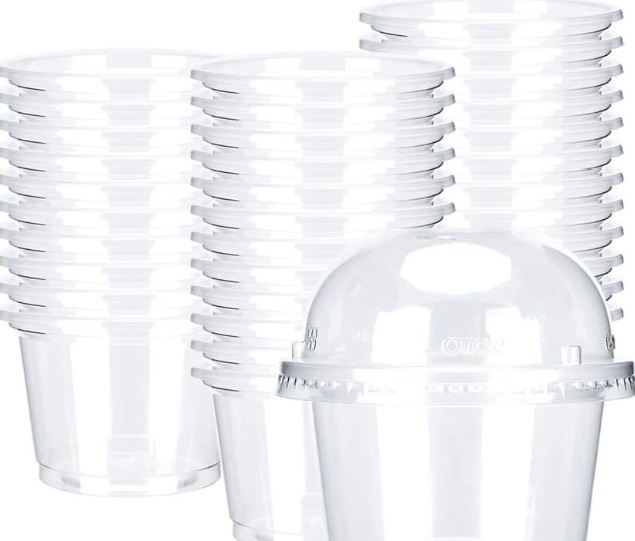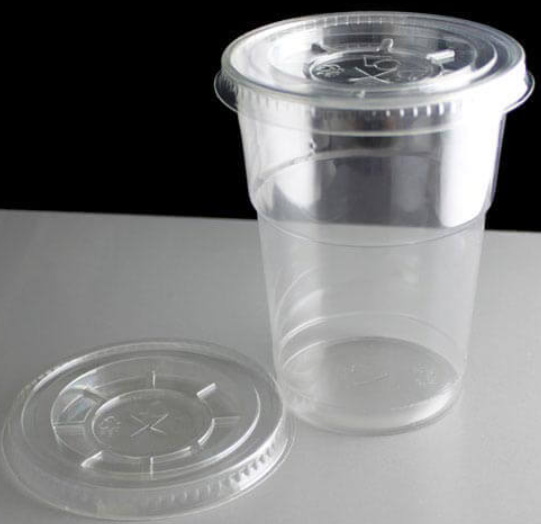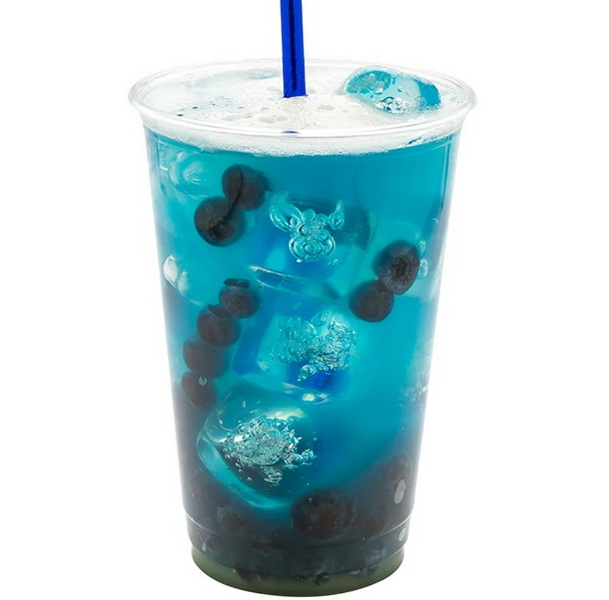
Content Menu
● Introduction to Disposable Plastic Cups with Lids
>> Benefits of Disposable Plastic Cups with Lids
● Environmental Impact of Disposable Plastic Cups with Lids
● Sustainable Alternatives
● Innovations in Disposable Plastic Cups with Lids
● Consumer Behavior and Awareness
● Challenges in Implementing Sustainable Solutions
● Future Outlook
● Conclusion
● FAQs
>> 1. Are All Disposable Plastic Cups with Lids Recyclable?
>> 2. What Are the Most Eco-Friendly Alternatives to Disposable Plastic Cups?
>> 3. How Can Businesses Promote Sustainability with Disposable Cups?
>> 4. What Types of Lids Are Available for Disposable Plastic Cups?
>> 5. Can Disposable Plastic Cups with Lids Be Reused?
● Citations:
The use of disposable plastic cups with lids has become a ubiquitous practice in modern life, particularly in the food and beverage industry. These cups are convenient, easy to use, and provide a hygienic way to consume beverages on the go. However, their environmental impact has raised significant concerns regarding sustainability and eco-friendliness. In this article, we will delve into the world of disposable plastic cups with lids, exploring their benefits, environmental challenges, and sustainable alternatives.

Introduction to Disposable Plastic Cups with Lids
Disposable plastic cups with lids are made from various types of plastics, such as PET (Polyethylene Terephthalate) and PP (Polypropylene), which are derived from petroleum. These materials are lightweight, durable, and can withstand different temperatures, making them suitable for both hot and cold beverages.
Benefits of Disposable Plastic Cups with Lids
1. Convenience and Hygiene: These cups are ideal for events, hospitals, and public gatherings where hygiene is paramount. They eliminate the need for washing and maintenance, saving time and labor.
2. Versatility: They are suitable for a wide range of beverages, from hot coffee to cold drinks, and come with various lid types (flat, dome, sipper) to accommodate different needs.
3. Portion Control: Small disposable plastic cups with lids are often used for condiments and samples, helping to reduce waste by providing precise portions.
4. Cost-Effective: Compared to reusable cups, disposable cups are generally cheaper to purchase and maintain, making them appealing to businesses looking to minimize costs.
Environmental Impact of Disposable Plastic Cups with Lids
Despite their convenience, disposable plastic cups with lids pose significant environmental challenges:
1. Non-Biodegradable: Most plastic cups are not biodegradable and contribute to landfill waste. When improperly disposed of, they can break down into microplastics, harming wildlife and contaminating the food chain.
2. Resource Consumption: The production of these cups requires substantial resources, including water and energy, contributing to greenhouse gas emissions.
3. Recycling Challenges: While some plastics are recyclable, the mixed materials used in disposable cups often complicate the recycling process. This complexity leads to a significant portion of plastic waste ending up in landfills or oceans.
4. Pollution: Plastic debris, including cups and lids, contributes to marine pollution, affecting marine life and ecosystems.
Sustainable Alternatives
To mitigate the environmental impact, several sustainable alternatives are emerging:
1. Compostable Cups: Made from plant-based materials like PLA (Polylactic Acid) or sugarcane fiber, these cups are biodegradable and compostable, reducing landfill waste.
2. Reusable Cups: Encouraging the use of reusable cups can significantly reduce waste and is becoming increasingly popular among consumers. Many companies offer incentives for customers who bring their reusable cups.
3. Eco-Friendly Lids: Innovations in lid design, such as using recycled materials or bioplastics, are also part of the shift towards sustainability.
4. Biodegradable Plastics: Some companies are developing biodegradable plastics that can replace traditional plastics in disposable cups, offering a more environmentally friendly option.
Innovations in Disposable Plastic Cups with Lids
The industry is evolving to incorporate more sustainable practices:
1. Recycled Content: Some cups now contain recycled plastic, reducing the demand for virgin materials and helping to close the recycling loop.
2. Customizable Options: Businesses can customize cups with eco-friendly materials and branding, promoting sustainability while maintaining brand identity.
3. Smart Packaging: Advances in packaging technology are leading to more efficient production processes and reduced waste generation.
Consumer Behavior and Awareness
Consumer behavior plays a crucial role in driving sustainability:
1. Awareness Campaigns: Public awareness campaigns about the environmental impact of disposable plastics have led to increased consumer demand for eco-friendly alternatives.
2. Policy Changes: Governments are implementing policies to reduce plastic waste, such as banning single-use plastics or imposing taxes on non-recyclable materials.
3. Corporate Responsibility: Many companies are adopting sustainable practices and promoting eco-friendly products to align with consumer values and regulatory requirements.

Challenges in Implementing Sustainable Solutions
Despite the push towards sustainability, there are challenges to overcome:
1. Cost: Sustainable alternatives are often more expensive than traditional disposable cups, which can be a barrier for small businesses or low-income consumers.
2. Infrastructure: The lack of adequate recycling infrastructure in many regions hinders the effective recycling of plastic waste.
3. Consumer Habits: Changing consumer behavior and habits takes time and requires consistent messaging and incentives.
Future Outlook
As technology advances and consumer awareness grows, the future of disposable plastic cups with lids is likely to involve more sustainable materials and practices. Innovations in bioplastics, compostable materials, and recycling technologies will play a key role in reducing the environmental footprint of these products.
Conclusion
While disposable plastic cups with lids offer convenience and hygiene, their environmental impact necessitates a shift towards sustainable alternatives. By embracing eco-friendly materials and practices, we can reduce waste and promote a more environmentally conscious lifestyle. As consumers, businesses, and governments work together, we can create a future where convenience and sustainability coexist.

FAQs
1. Are All Disposable Plastic Cups with Lids Recyclable?
Not all disposable plastic cups with lids are recyclable. The recyclability depends on the type of plastic used and local recycling guidelines.
2. What Are the Most Eco-Friendly Alternatives to Disposable Plastic Cups?
Eco-friendly alternatives include compostable cups made from plant-based materials and reusable cups, which significantly reduce waste and environmental impact.
3. How Can Businesses Promote Sustainability with Disposable Cups?
Businesses can promote sustainability by using cups with recycled content, encouraging the use of reusable cups, and transitioning to compostable options.
4. What Types of Lids Are Available for Disposable Plastic Cups?
Common types of lids include flat lids, dome lids, sipper lids, and snap-on lids, each designed for different beverage types and uses.
5. Can Disposable Plastic Cups with Lids Be Reused?
While technically possible, reusing disposable plastic cups with lids is not recommended due to hygiene concerns, especially in public or commercial settings.
Citations:
[1] https://hotshotsleeves.com/plastic-cups/how-does-using-plastic-cups-or-disposable-cups-help-the-environment-stay-clean/
[2] https://www.lydy.com.au/blogs/news/the-negative-impacts-of-plastic-coffee-lids
[3] https://emeraldecovations.com/2024/09/the-versatility-of-disposable-cups-with-lids-a-comprehensive-guide/
[4] https://www.istockphoto.com/photos/clear-plastic-cup-with-lid
[5] https://www.youtube.com/watch?v=PFi54dv-c1o
[6] https://gmz.ltd/disposable-cups-wholesale-everything-you-need-to-know/
[7] https://www.lansincommodity.com/info/cup-conundrums-common-questions-about-plastic-87314374.html
[8] https://hotshotsleeves.com/product-category/clear-plastic-cup-lids/
[9] https://gmz.ltd/5-best-eco-friendly-disposable-cups-lesser-known/
[10] https://stack-cup.com/blogs/news/the-environmental-impact-of-disposable-cups
[11] https://www.sumkoka.com/disposable-cups-facts.html
[12] https://www.mrtakeoutbags.com/blog/clear-plastic-cups-which-lid-is-the-best-fit-for-my-cup/
[13] https://shopequo.com/blogs/blog/disposable-to-go-cups-with-lids
[14] https://insights.made-in-china.com/What-Are-Disposable-Plastic-Cups-A-Comprehensive-Guide-to-Understanding-Their-Use-and-Benefits_cTRfuzVYVJId.html
[15] https://gmz.ltd/types-of-plastic-cups-and-the-environmental-challenges-they-pose/
[16] https://takeawaypackaging.co.uk/online-shop/cups/biodegradable-compostable-eco-clear-cups-lids/
[17] https://www.limepack.eu/blog/sustainability-en/environmental-impacts-of-disposable-cups-and-reusable-cups
[18] https://greenpaperproducts.com/collections/cups/compostable-cold-cups
[19] https://circulr.ca/2024/10/29/the-environmental-impact-of-single-use-plastic-cups-in-canada-and-why-reusable-cups-are-the-future/
[20] https://www.biopak.com/au/cups/cold-cups
[21] https://www.packware.com.au/cdn/shop/articles/disposable-plastic-cups-understanding-the-environmental-impact-and-finding-solutions-365440_2048x.jpg?v=1722535827&sa=X&ved=2ahUKEwjF-4DIiNWMAxWqzjQHHe5NHIkQ_B16BAgBEAI
[22] https://customcupfactory.com/blogs/news/is-the-use-of-plastic-cups-environmentally-friendly-which-cups-are-best

















